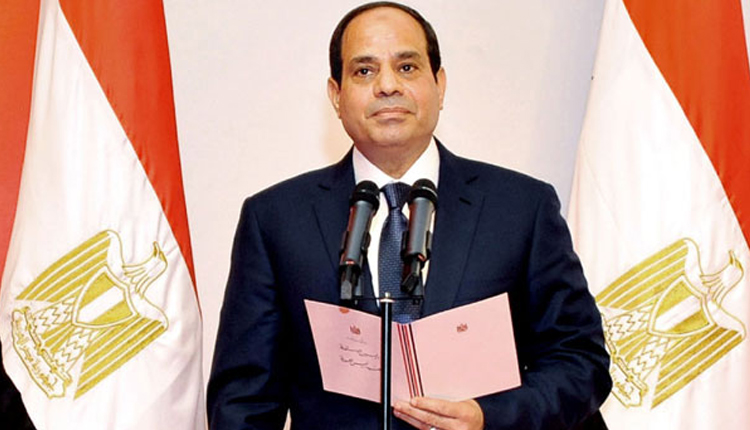Egyptian President Abdel Fattah al-Sisi is due to take the Oath of Office before Egypt’s parliament on Saturday to start his second term as the country’s president after being re-elected in March in a landslide victory.
According to Egypt’s 2014 constitution, the country’s president-elect must take the oath before a special session of parliament after winning elections and before his presidential term officially starts.
Sisi’s second term begins on 3 June. Sisi won a second term in office in the March presidential elections with 97 percent of the vote.
In a common tradition of royal and republican systems, swearing in the constitutional oath remains a legal and constitutional obligation of any regime.
Past kings and presidents of Egypt swore the oath of office in unique ways.
King Farouk swore his oath in front of parliament on 29 July 1937 for the first and last time, before the monarchy was abolished following the 23 July 1952 revolution.
King Farouk, who was heir to the throne during the reign of his father King Fouad, did not immediately ascend to the throne after his father’s death in 1936, because he had not reached the minimum age of 18.
For months the country remained under the leadership of the royal guardianship chaired by Farouk’s uncle Prince Mohamed Ali until the young king turned 18 in 1937.
“I swear by God to respect the constitution, the laws of the Egyptian state, and preserve the independence of the nation and the safety of its lands,” read the text of the formal oath taken by King Farouk.

After the Free Officers’ 1952 revolution and the declaration of the new republican regime on 18 June 1953, General Mohamed Naguib was sworn in to office in front of the Cabinet and members of the Revolution Command Council.
Three years later, on 25 June 1956, Gamal Abdel-Nasser took the oath to become Egypt’s second president in front of the ministers in a ceremony at the Police Club.
In 1957, Nasser took the same oath in front of parliament.
In 1958, following the establishment of the United Arab Republic, which unified Egypt and Syria in 1958, Abdel-Nasser swore the constitutional oath to become the president of the short-lived union.
In 1965, Abdel-Nasser took the oath of office of President of Egypt for the third and last time before his death in September 1970.

In October 1970, President Anwar El-Sadat was sworn in as Egypt’s third president.
“I swear to god to maintain the republican regime, to respect constitution and law, to fully preserve the people’s interests and to protect the nation’s independence and its territories,” El-Sadat said in front of the House of the People.

In October 1976, El-Sadat was sworn in as president a second and last time, before he was assassinated in October 1981.
Following El-Sadat’s death, his vice president Hosni Mubarak took the oath to become Egypt’s fourth president before Egypt’s parliament in October 1981.

Mubarak took the oath three more times after winning three consecutive public referendums in 1987, 1992 and 1999.
In 2005, Mubarak was sworn in as president for a fifth and last time after winning Egypt’s first multi-candidate presidential elections.
Following the popular uprising that toppled Mubarak in January 2011, Mohamed Morsi was elected as Egypt’s president and took the oath on 30 June 2012 in front of the country’s Supreme Constitutional Court, since the House of Representatives had been disbanded days earlier.
On 4 July 2013, the head of the Constitutional Court Adly Mansour was sworn in as Egypt’s interim president in front of the same court after Morsi was toppled in a popular uprising.
One year later, president-elect Abdel Fattah al-Sisi took the oath in June 2014 in front of the Supreme Constitutional Court after securing a landslide victory in elections held as part of the roadmap put in place following the 2013 uprising.
Source: Ahram Online


